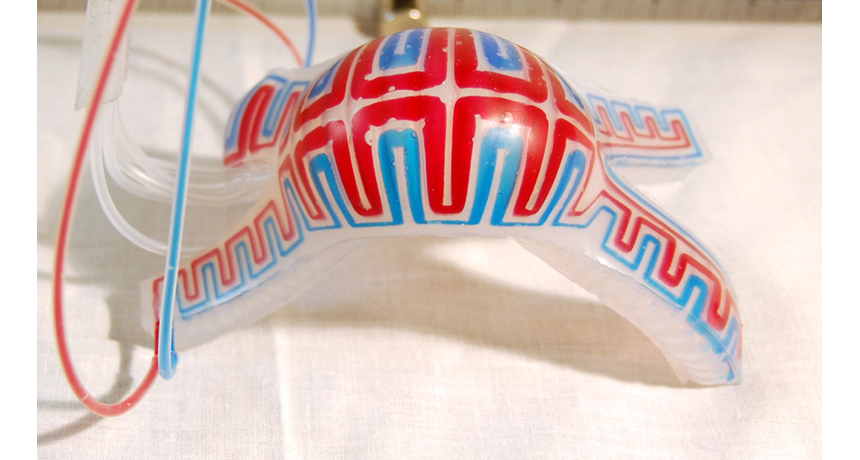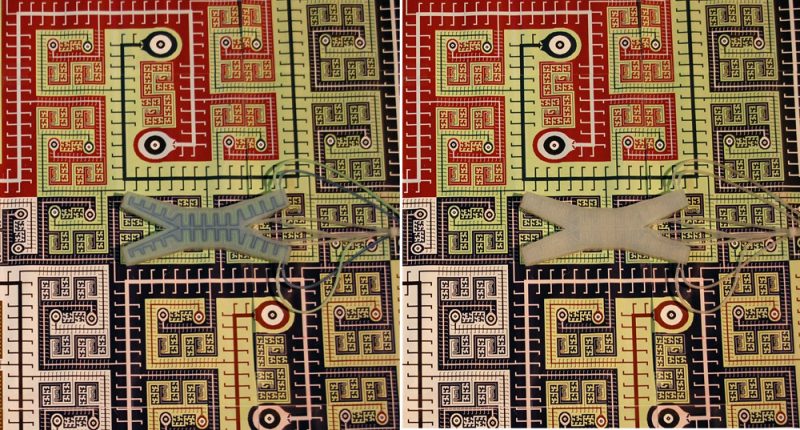Color-changing robot
Tiny tunnels within the “skin” of a robot allow it to blend in with or stand out from its surroundings

Tiny tubes filled with colored dyes let these soft robots blend in with their environments.
S. Morin, Harvard University
Chameleons and octopuses are masters of disguise: These animals can change their appearance at a moment’s notice. Now, so can a robot.
Scientists at Harvard University recently invented a squishy robot that looks like an inflatable letter “X.” About the size of a smartphone, it lurches along like a mysterious jelly creature on the bottom of the sea. Now, in a project funded by the U.S. government, these scientists have created a new cloak for the robot that gives it the ability to change color.
Tiny tunnels like blood vessels run through the robot’s translucent skin. When pumps send colored dye through those tunnels — each about half as wide as a paper clip — the color shows through the skin. Stephen Morin of Harvard University helped design the new robot and its cloak. His team showed how the cloak can hide the ‘bot in a study published in August in the journal Science.
Morin is a materials scientist, or a scientist who uses information about matter to create new and useful things. He told Science News that the dyes can give material used to make the robot skin several different colors and patterns. If used instead on the outside of an artificial arm or leg, the material might make the prosthetic look more natural. In a war zone, the cover may help camouflage — or hide — machines.

The new material “does a nice job showing that you can create camouflage using a simple technique that is quite effective,” Jason Heikenfeld of the University of Cincinnati told Science News. This electrical engineer did not work on the new ‘bot.
To make the robot walk, scientists pump air through small tubes connected to its body. Colored dyes enter the transparent skin through other tiny tubes.
Morin’s group created and tested a variety of dyes of different colors and temperatures, and evaluated the appearance when displayed different ways.
The right colors on the upper skin layer can also be used to help the robot stand out from its surroundings. And, Morin told Science News, the heat from a warmer dye may make the robot easier to detect and follow with heat-sensing cameras.
The robot’s not ready for the real world, though. It can’t go anywhere without help from those air- and dye-filled tubes. Morin says that future models of the ‘bot may be able to carry their own power pack and color supplies.
Power Words
prosthetic An artificial body part, such as a leg or arm.
dye A natural or synthetic substance used to add color to or change the color of something.
materials science The study of matter, and the creation of new types of substances.
translucent Allowing light, but not detailed images, to pass through; semitransparent.







